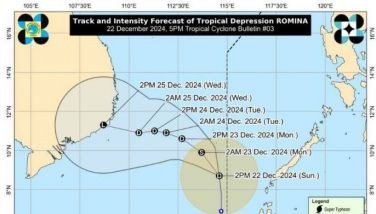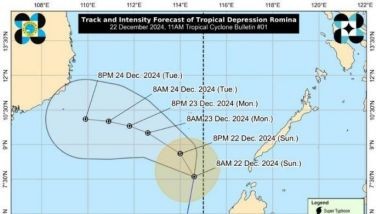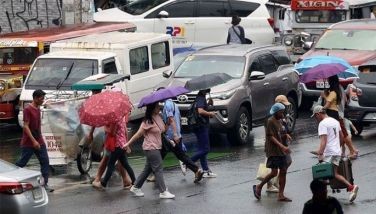We need city planners not politicians for our metropolis
What tourists want, says Department of Tourism (DOT), is “to have fun.†But, no! They want much more than that. Each cosmopolitan city is a gem. Bangkok, Tokyo, Paris, Sydney are polished gems, but Manila, let alone Metro Manila, is not. Tourists expect a red carpet welcome, meeting courteous and pleasant people, finding clean washrooms, an efficient transport system, decent and reasonably-priced accommodation at several three-star hotels, and a safe environment. Visitors are disappointed because our natural and cultural landscape has been obliterated alongside its rich history. Investments prioritize high-rise condos and malls, making our heritage churches and monuments insignificant, instead of contributing to their upkeep and preservation. Tourists are disappointed and get the impression that we are uncultured, unenlightened, and common.
Royalty, temples, and crafts beckon 15 million visitors to Thailand and 7 million tourists to Indonesia, as against our 4.7 million tourists. As soon as we arrived at Suvarnabhumi Airport in Bangkok, we hear the flight schedule monitor announcing every minute the arrival and departure of JAL, Emirates, Quantas, KLM, etc. I could not help but envy this continuous arrival of eager visitors.
How Olympics 2000 restructured Sydney
Usually, it takes a worldwide event like the Olympics, or a gathering of international heads-of-state, to arouse a country to transform its capital city. For Olympics 2000, Australia won the tough world bidding competition, and quickly began construction as early as 1993. The plans were so precise that the suburb of Homebush on the Parramatta River, only 16 kilometers away from the city center, cleared away factories and an entire naval base station in the site. The Main State Sports Center (with an 80,000 seating capacity) and the Aquatic Center were also quickly set up. They were opened to the public in 1995. Tour buses took adults (at AU$5) and children (at AU$2.50) to the site. An off-season round trip by the efficient Australian Railways costs AU$1.80 during that time.
After Olympics 2000, the whole area was converted to low cost housing villages.
Today, the most talked about city in the eastern hemisphere of the world is Sydney. As the plane descends, the white giant oyster Opera House designed by a Danish architect, that is set against the blue bays and coves of Sydney Harbor, greets the visitors. It is truly one of the most unforgettable panoramas of world tourism.
Sydney Harbor and Manila Bay have so much in common. While Sydney Harbor has the historical Rock, where British convicts were unloaded in 1870 by three great fleets, Manila Bay has the American military defense bastion — the Corregidor Rock. Here General MacArthur and his aide, Dwight Eisenhower, planned the defense of Manila from the Japanese invasion with Commonwealth President Manuel Quezon and his Cabinet men.
Murderers, thieves and drunks made up the life in Sydney Rock. The city plan was only laid out after 25 years, during Governor Macquaries’ administration. Before then, a military mafia, the Rum Corps, which made huge profits selling rum at the expense of the small farmers, managed to outmaneuver three governors, including the famous William Bligh of Bounty mutiny fame.
Similar social problems persisted near Manila piers, particularly in nearby Divisoria marketplace and the district of Tondo.
Manila’s fabled treasures from her Spanish and American eras
Before the war, Manila was one of the fabled cities of Asia. It was the crown of the whole country, which had then only 18 million Filipinos and for the first time, she was free from deficit. The Manila harbor was busy with international trade and Manila paper, the thick Manila abaca rope, and Tabacalera cigars, which were popular all over the world. In 1959, when we resided in Saigon, the Land and Transport officer who gave me a driving test recalled that the “huge†Sta. Ana cabaret was so much fun.
Manila Bay is set against Intramuros, Fort Santiago and Rizal Park where the national hero Jose Rizal was sentenced to death as a traitor to Spain. This is the Spanish phase of our history. The beautiful boulevard alongside the nearby Manila Hotel is of American Vintage. At one time, it was named after Admiral George Dewey, the American naval officer who captured Manila, and was renamed Roxas Boulevard, after President Manuel Roxas of the first Republic of the Philippines in the 1960s.
America sent her best planner, Architect Daniel Hudson Burnham, to design Commonwealth Manila as the capital of the country. He designed the major cities of Washington D.C., including its picturesque Union Train Station, Chicago, and Pittsburgh. Known as the original builder of skyscrapers, he was the director of the 1983 Columbian Expo of Chicago, which celebrated the 400th anniversary of Columbus’ discovery of America. This “imported†genius completed the plan to include the Philippine General Hospital complex with the Nursing School off Taft Avenue, the main road that cuts through the old Manila from the Post Office to San Andres circle down to Vito Cruz Street. Note that the art deco façade of the Rizal Memorial Coliseum complex is similar to that of the Metropolitan Theater.
Behind the Nursing School along Padre Faura Street, is another set of handsome buildings — the Justice Department, The University of the Philippines, etc., crowning the Ermita district. Along the opposite side was Dewey Boulevard promenade and the Luneta Park. How I loved to walk along the clean and green pathway where bulky shaded trees would drop huge pink hairy blossoms! I wish I knew the names of those exotic ornamental trees. Today, only one place carries the name of this extraordinary architect, the remarkable Baguio City landmark — Burnham Park.
Beaches alongside culture
The famous beach area of Manly and Bondi are across the Sydney Bay. Four efficient ferry boats regularly bring people here and the Taronga open-air zoo. This could be our Corregidor and Mariveles, Bataan. The reorganization of our local beaches along Parañaque and Cavite can easily match the spacious Manly and Bondi areas.
The Sydney Opera House Complex can be likened to the Cultural Center, PICC, and Folk Arts Theater Complex. Numerous theaters for live plays are within the city centers and town hall. The huge Sydney Entertainment Centre is across, at the Darling Harbor Authority. This large concert venue and the whole convention Novotel Hotel located there, was used by Olympics 2000.
Believe it or not, but the Ermita-type district bars, discos, and night girls are right at King’s Cross. It dates back from the Vietnam War when Sydney became an R & R center for American soldiers.
The convicts colony in early Australia
Sydney could have remained a mere prison camp, when Great Britain was prevented from transporting her arrested criminals to North America during the American War of Independence. In 1779, upon explorer Captain James Cook’s suggestion, New South Wales was opened up as a colony for criminals. Three Fleets deposited 4,000 convicts, sailors, and four companies of marines. The livestock and supplies calculated to last them were so insufficient that starvation hang over the settlement for 16 years. It was under the command of Captain Arthur Philip.
The prisoners worked on farms, road construction and government building projects. After work, they got drunk and then got into very harmful fights and murders. Thievery and swindling were rampant. Shanties were casually built without any plans. It was like the dangerous situation around Manila’s piers, Intramuros, Divisoria and Tondo today.
Governor Phillip decided to balance the population by attracting free settlers, who could have land grants provided they allowed peaceful convicts to work for them, together with worthy convicts who had served their time. The same land grants could be awarded to officers and soldiers. Educational facilities followed. Whereas, these were excellent agronomy high schools before, education today in Australia is technical and readily employs everyone.
Governments could uplift a nation with professional planning
From the 60s,population in cities specially in Manila surged as country people fled their farms, hoping to earn more in the city. Without foresight and a sensible town plan, the Philippine post-war presidents allowed any country folk to resettle in Manila. The legal residents were hemmed in by squatter colonies, which became the lairs of criminals and and cause disease outbreaks. Manila today embraces the surrounding provinces of Rizal, Laguna, Cavite and Bulacan, making up 16 cities and municipalities, and is referred to as Metro Manila since the year 2000.
Local government did not have provisions for more law enforcers, proper waste disposal, an extended transport system, more schools, hospitals, and markets.
After almost seven decades of independence, is this all we have achieved?
(For feedback please email at [email protected])
- Latest





























